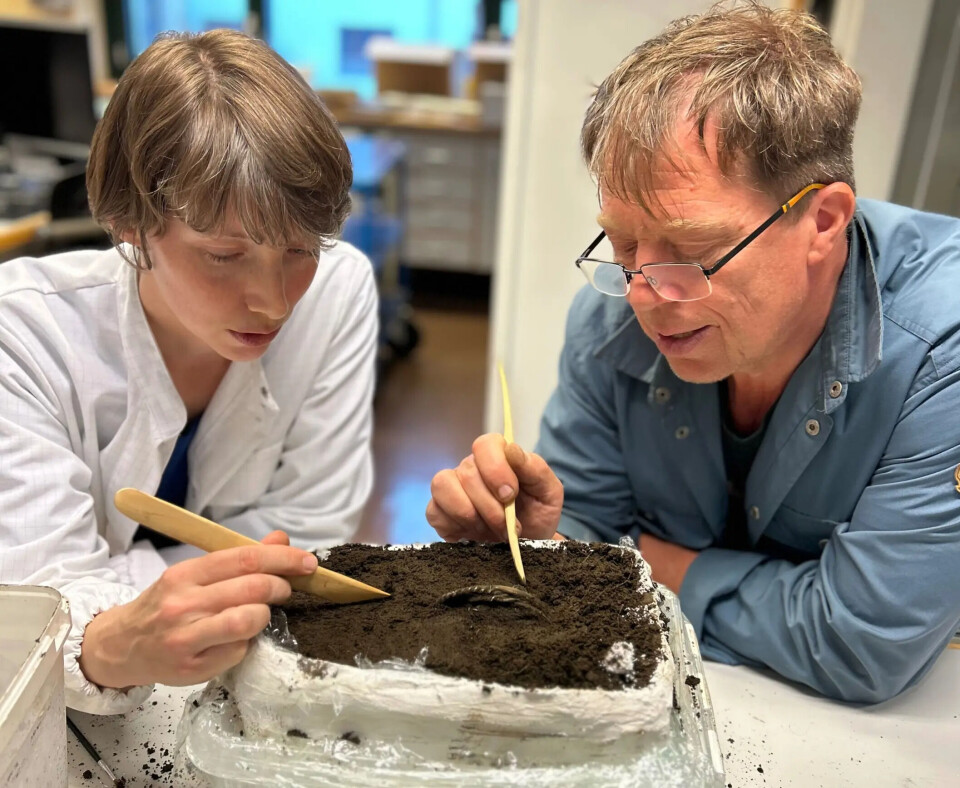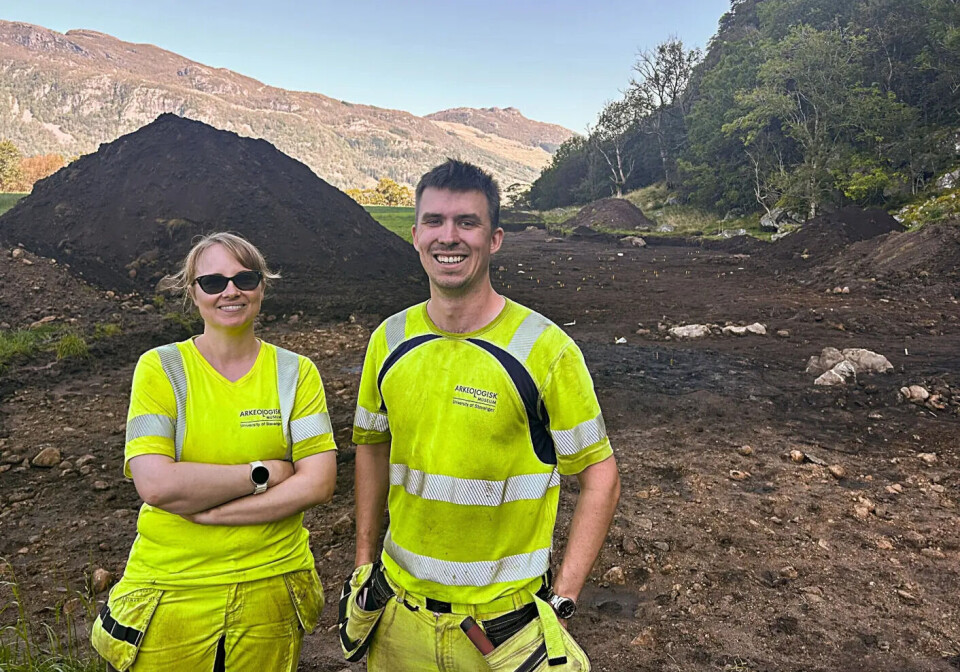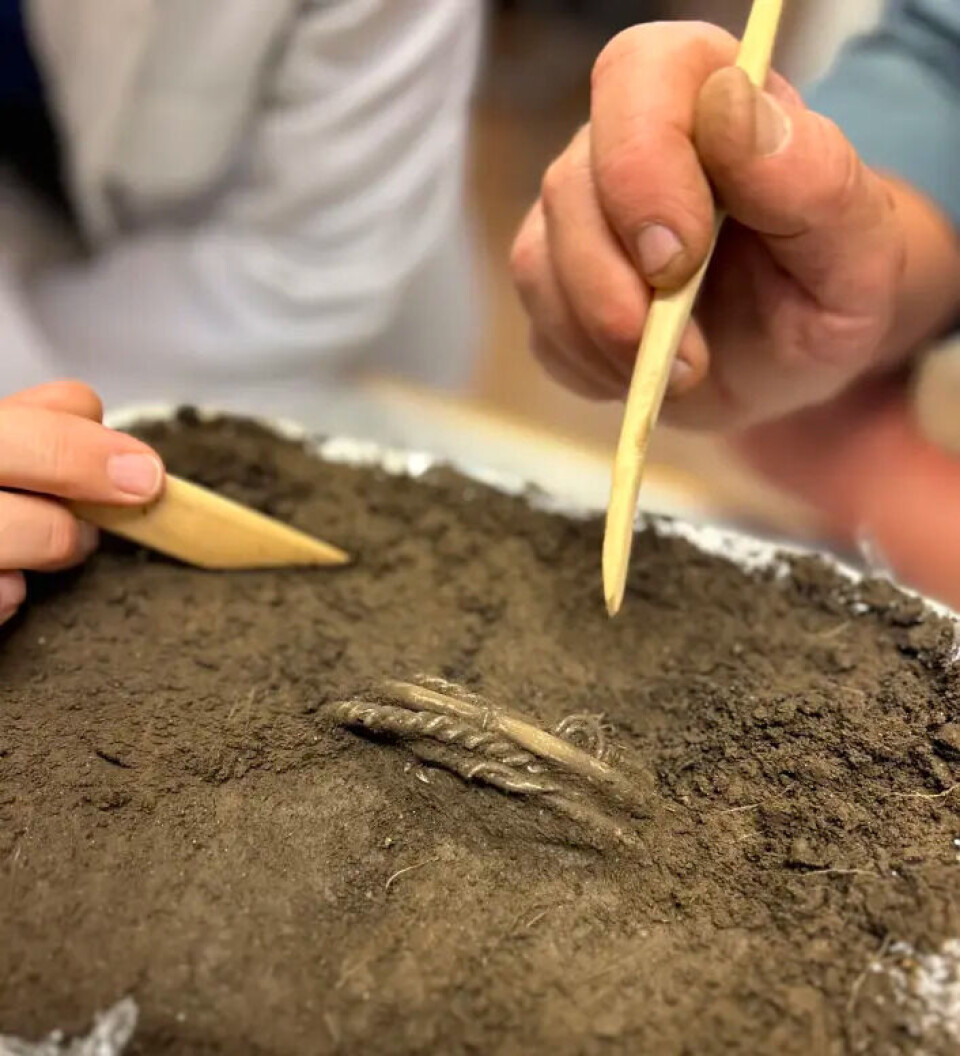
New discovery of Viking treasure:
“This is undoubtedly the most significant event of my career”
The Viking treasure was buried under what was presumably the thralls’ house.
“This is undoubtedly the most significant event of my career,” says Volker Demuth. He works at the University of Stavanger's Museum of Archaeology.
The silver treasure was buried and hidden by Vikings more than a thousand years ago.
But why was the treasure hidden beneath what seems to have been the house of thralls?
On a mountain slope in southern Norway, a farmer was preparing a new tractor road. Archaeologists were brought in to survey the area before the road was built.
Around 20 centimetres below the surface, they found four large silver arm rings, each decorated differently.
Buried among the thralls
“The excavation now reveals that this was once a large and powerful Viking farm,” Demuth says in a press release from the University of Stavanger (link in Norwegian).
The Viking farm comprised several buildings for both people and animals. Archaeologists found remains of soapstone pots, rivets, knife blades, and whetstones for sharpening tools.
A smaller house was also found on the farm, likely the living quarters of the tralls.
According to Demuth, the Viking treasure was buried beneath the floor of this house.

A truly unique find
“I initially thought we were dealing with twisted copper wires, which are often found in agricultural land,” field archaeologist Ola Tengesdal Lygre says in the press release.
“But when I saw that there were several and that they weren’t copper, but silver, I realised we had stumbled upon something significant,” he says.
Volker Demuth highlights how rare this find is, as it is uncommon for archaeologists to discover such artefacts exactly where the Vikings originally placed them.
“Usually, valuable objects like these are found in ploughed fields, where they’re displaced from their original context. Since this silver treasure hasn’t been moved, it offers us fresh insights into life and society during the Viking Age,” he says.
Forced to flee to the mountains?
The Viking farm’s strategic location allowed it to have complete control over the entrance to the fjord.
The excavation also shows that the farm was burned down at some point.

The Viking Age in Norway lasted from 800 to 1050. The farm and silver treasure likely date to the 900s, a marked by considerable unrest.
“If the residents of this farm had to flee from an attack, it would make sense for them to hide their valuables before escaping into the mountains,” he says.
Silver from abroad
There were no silver mines in Norway at this time, meaning the silver had to have come from abroad.
Vikings traded for silver, received it as gifts, or took it as loot during raids.
The newly discovered arm rings resemble the silver neck rings found in the region in 1769. Archaeologists have not ruled out a possible connection between these two finds.
Following this remarkable find, the excavation of the more than 1,000-year-old Viking farm continues.
The Viking Age was the age of silver
Museum Director Ole Madsen at the University of Stavanger’s Museum of Archaeology says in the press release that the silver treasure will be displayed at the museum as soon as possible.
“This is an extraordinary find that provides us with unique insight into one of the most significant periods in Norwegian history: the Viking Age,” he says.
When archaeologists find gold treasures in Norway, they are usually finds from the Migration Period – in the years 400-570.
There are fewer gold treasures from the Viking Age, but silver artefacts are more common. During the Viking Age, silver largely replaced gold’s earlier role.
Silver jewellery in the Viking Age was often crafted from melted-down coins, many of which were of Arabic origin.
A region rich in silver finds
Rogaland is the region in Norway with the highest number of Viking Age silver finds, hinting at extensive contact between Vikings from this region and the wider world.
Interestingly, many of these finds are from more remote inland regions, raising questions about Viking trade routes and interactions with the outside world.
———
Related content
Translated by Alette Bjordal Gjellesvik






































